Just 17 miles north of its famous cousin lies a monument that dwarfs Stonehenge in every conceivable way. Avebury’s stone circle complex covers an area so vast that an entire village sits within its ancient embrace, where people live their daily lives surrounded by stones that have stood sentinel for over 4,500 years. While millions flock to photograph Stonehenge’s iconic trilithons, most remain unaware that Britain’s true megalithic masterpiece lies quietly in the Wiltshire countryside, accessible to all who seek to walk among giants. This isn’t just another ancient stone circle – it’s a prehistoric wonder that challenges everything we thought we knew about our ancestors’ capabilities and ambitions.
The Mind-Boggling Scale That Puts Stonehenge to Shame

Imagine trying to fit 12 Stonehenges inside a single monument, and you’ll begin to grasp Avebury’s staggering proportions. The outer stone circle spans 1,088 feet in diameter, making it the largest stone circle in the world by a considerable margin. The massive earthwork that surrounds these stones – a henge consisting of a ditch and bank – encloses an area of 28.5 acres, compared to Stonehenge’s modest 2.3 acres. To put this in perspective that anyone can understand: you could comfortably fit a dozen football fields within Avebury’s boundaries. The original monument contained approximately 100 massive sarsen stones, each weighing between 15 and 40 tons, transported and erected using nothing but human ingenuity, rope, and wooden tools.
Ancient Origins That Predate the Pyramids
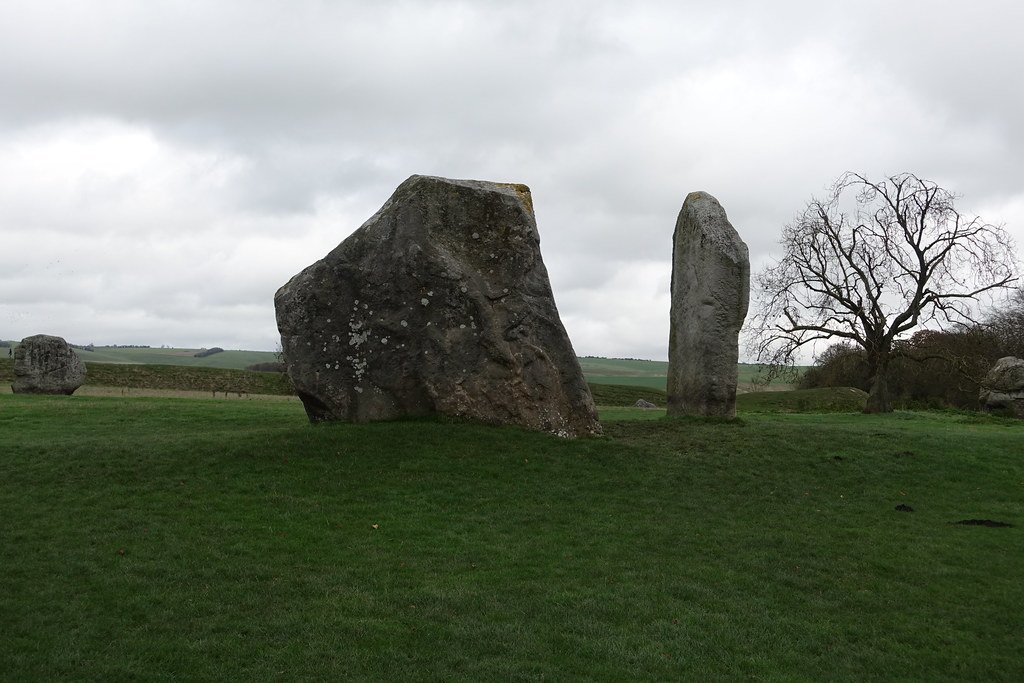
Recent archaeological evidence suggests that Avebury’s construction began around 3300 BCE, making it roughly 500 years older than Stonehenge and predating Egypt’s Great Pyramid by nearly eight centuries. This timeline places Avebury’s creation in the late Neolithic period, when Britain was still connected to continental Europe by the Doggerland landbridge. The monument’s builders lived in a world without metal tools, horses, or wheeled transport, yet they managed to create something that still takes our breath away today. Carbon dating of organic materials found in the monument’s ditches has revealed that construction likely took place over several generations, suggesting a multi-century project that required unprecedented social organization and commitment to a shared vision.
The Mysterious Ritual Landscape That Extends for Miles
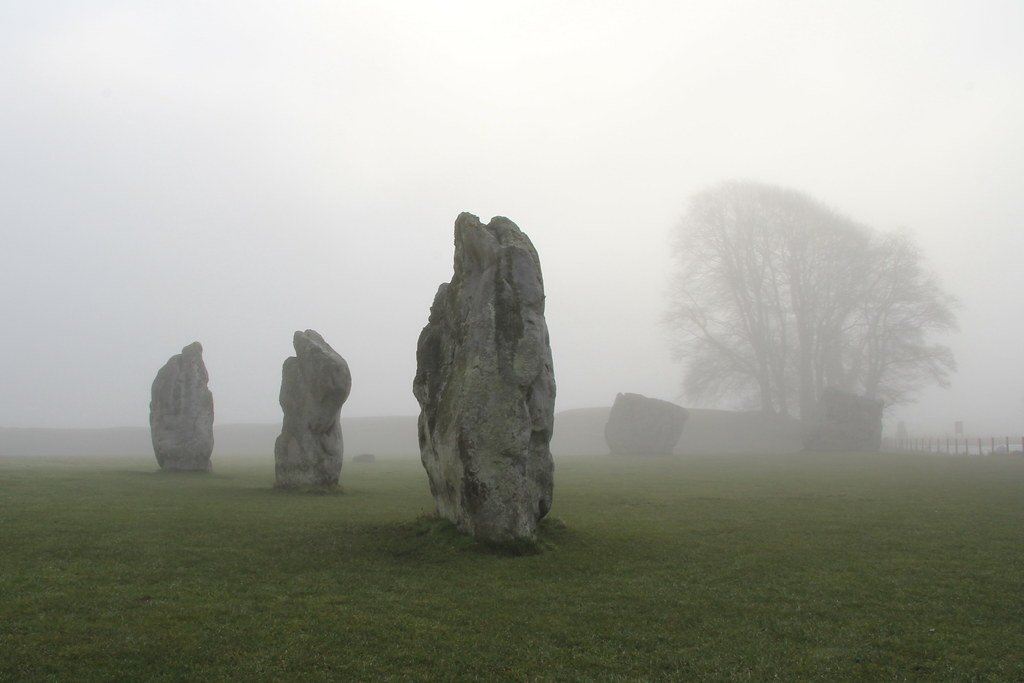
Avebury doesn’t stand alone – it serves as the centerpiece of Britain’s most complex prehistoric ritual landscape, stretching across the surrounding countryside like an ancient theme park designed by Stone Age architects. The famous West Kennet Avenue, a double row of standing stones, once connected Avebury to the Sanctuary, a smaller circular monument located 1.5 miles to the southeast. Silbury Hill, Europe’s largest artificial mound, rises 130 feet from the landscape just a mile away, while the West Kennet Long Barrow, one of Britain’s finest Neolithic burial chambers, overlooks the entire complex from a nearby ridge. This interconnected sacred geography suggests that our ancestors viewed the entire area as a single, unified ceremonial space where different rituals and activities took place across multiple generations. The scale of this landscape modification rivals any medieval cathedral project, demonstrating the immense spiritual and social importance these monuments held for ancient communities.
Engineering Marvels That Defy Bronze Age Limitations

The logistics of Avebury’s construction represent one of prehistory’s greatest engineering achievements, accomplished without any of the tools we’d consider essential for such a project. Moving stones weighing up to 40 tons across undulating countryside required sophisticated knowledge of leverage, friction, and coordinated human effort that we’re only beginning to appreciate. Archaeological experiments have shown that each large stone would have required teams of 100-200 people working in perfect coordination, using a combination of rollers, ramps, and rope systems to transport them from the Marlborough Downs quarry sites several miles away. The precision placement of these massive monoliths within the circle required advanced surveying techniques and mathematical understanding that challenges our assumptions about Stone Age capabilities. Perhaps most remarkably, the builders managed to erect these stones without leaving behind any evidence of construction ramps or earthworks, suggesting they possessed techniques that have been lost to time.
The Village That Lives Within Ancient Walls
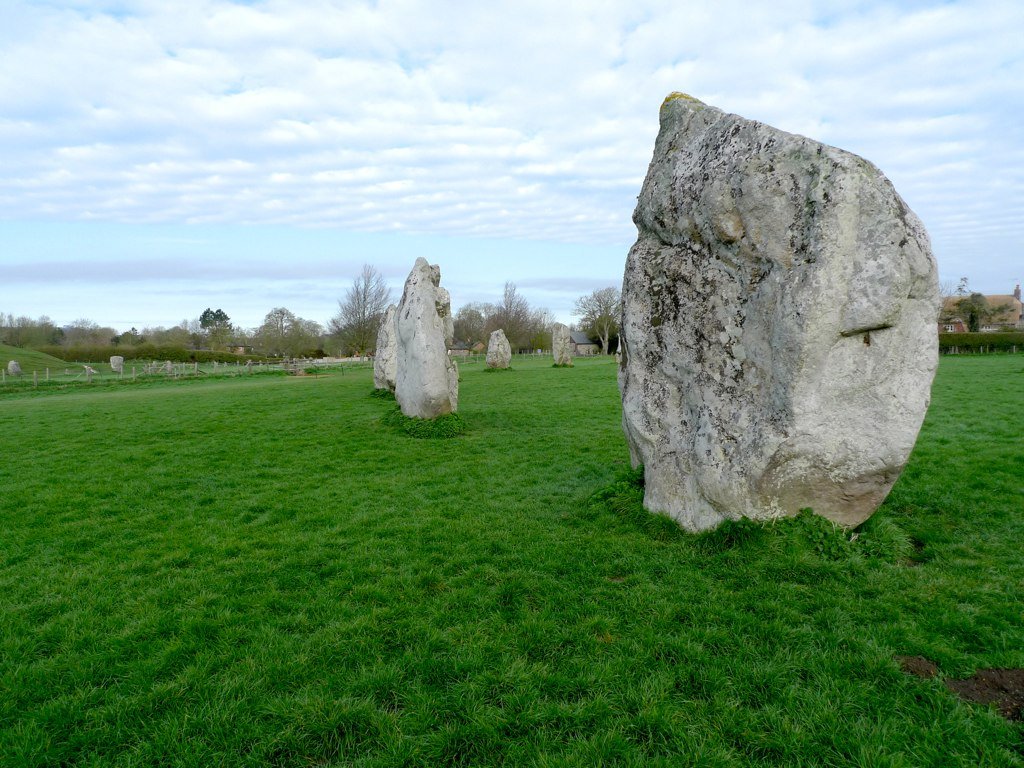
What makes Avebury truly unique among world heritage sites is that it remains a living landscape where modern life intersects with ancient mystery in the most extraordinary way. The village of Avebury, home to around 500 residents, sits entirely within the stone circle’s boundaries, with houses, gardens, and a 14th-century church nestled between monuments that predate written history by millennia. Children walk to school past stones that witnessed 4,000 years of human civilization, while villagers tend gardens in soil that has been continuously cultivated since the Bronze Age. The Red Lion pub, claiming to be the only inn in the world situated within a stone circle, serves pints where ancient rituals once took place. This extraordinary juxtaposition creates an atmosphere unlike anywhere else on Earth, where the profound and the mundane exist in perfect harmony, and where you can literally live your life surrounded by one of humanity’s greatest achievements.
Sacred Geometry Hidden in Plain Sight

Modern archaeological surveys using advanced laser scanning and ground-penetrating radar have revealed that Avebury’s seemingly random stone placement actually follows sophisticated geometric principles that would impress any mathematician. The monument’s design incorporates precise astronomical alignments, with the main entrance oriented toward the moonrise at its most northerly position, a celestial event that occurs only once every 18.6 years. Within the great circle, two smaller stone circles create a pattern that some researchers believe represents a symbolic representation of the human eye or cosmic egg, suggesting deep spiritual significance embedded in the monument’s very structure. The spacing between stones follows mathematical ratios that appear throughout nature – the same proportions found in flower petals, nautilus shells, and galaxy spirals. These discoveries suggest that Avebury’s builders possessed not just practical engineering skills, but also abstract mathematical and astronomical knowledge that we’re only now beginning to decode through sophisticated modern technology.
The Great Stone Massacre and Medieval Superstition

Perhaps no chapter in Avebury’s history is more tragic than the systematic destruction that began in medieval times, when Christian authorities viewed the ancient stones as pagan idols that threatened the new faith. Starting in the 14th century, villagers were actively encouraged to topple, break up, and bury the massive sarsens, transforming monuments that had stood for 3,000 years into building materials for houses, walls, and roads. The process was both dangerous and labor-intensive – heating the stones with fires and then dousing them with cold water to create cracks where they could be split apart with hammers and wedges. One unfortunate individual, now known as the “Barber Surgeon” after medieval coins and scissors found with his skeleton, was crushed to death when a 13-ton stone fell on him during this destruction process around 1320 CE. By the 18th century, more than half of Avebury’s original stones had been destroyed, representing one of archaeology’s greatest losses and highlighting how different societies value their inherited past.
Alexander Keiller’s Heroic Restoration Mission

In the 1930s, marmalade heir and amateur archaeologist Alexander Keiller launched one of Britain’s most ambitious archaeological rescue projects, dedicating his considerable fortune to saving what remained of Avebury from complete destruction. Using innovative techniques for the time, including aerial photography and systematic excavation, Keiller’s team located and re-erected dozens of fallen stones, marked the positions of destroyed ones with concrete pillars, and cleared centuries of accumulated debris from the monument. His meticulous documentation methods, revolutionary for the 1930s, created the detailed records that still guide conservation work today and established many of the archaeological standards now considered routine. Keiller purchased large sections of the village and surrounding farmland to protect them from development, essentially creating Britain’s first privately funded heritage conservation project. Without his intervention, Avebury might have suffered the same fate as countless other stone circles that were completely obliterated during the agricultural improvements of the 18th and 19th centuries.
Astronomical Observatory or Spiritual Theater

Recent research has revealed that Avebury functions as a sophisticated astronomical calculator, capable of tracking multiple celestial cycles with remarkable precision that rivals many modern observatories. The monument’s various stone alignments mark not just the obvious solar events like solstices and equinoxes, but also the complex 18.6-year lunar cycle, the rising and setting positions of particular stars, and even the eight-year cycle of Venus. This astronomical sophistication suggests that the site served as a kind of Stone Age university where knowledge of celestial mechanics was preserved and transmitted across generations. The complex interplay of earthworks, stone circles, and surrounding monuments creates multiple viewing platforms and sight lines that would have allowed ancient astronomers to make observations and predictions with startling accuracy. Some researchers propose that Avebury represented a kind of “cosmic theater” where astronomical events were not just observed but celebrated through elaborate ceremonies that brought together communities from across Britain and beyond.
Archaeological Treasures That Rewrite Prehistory

Excavations at Avebury have yielded a treasure trove of artifacts that paint a vivid picture of Stone Age life and challenge many assumptions about prehistoric British society. Beautifully crafted pottery vessels, some decorated with intricate geometric patterns, suggest a level of artistic sophistication rarely associated with Neolithic cultures. Stone tools made from materials sourced from across Britain – flint from the south coast, volcanic rock from Wales, and exotic stone types from Scotland – indicate extensive trade networks that connected far-flung communities in ways previously thought impossible for the period. Perhaps most intriguingly, analysis of food remains and cooking debris reveals that massive feasts took place at the site, with evidence suggesting that hundreds or even thousands of people gathered periodically to share meals and participate in ceremonies. These findings paint a picture of Avebury not as an isolated monument, but as a vital hub in a sophisticated network of prehistoric communities with complex social, economic, and spiritual relationships.
The Sarsen Stones’ Mysterious Origins

The massive sarsen stones that form Avebury’s circles represent one of geology’s most fascinating puzzles, formed through processes so specific and rare that scientists are still debating their exact origins. These incredibly hard sandstone monoliths began as layers of sand deposited on an ancient seabed around 20 million years ago, then underwent a mysterious hardening process that created some of the most durable rock formations in Britain. The nearest source of suitable sarsens lies on the Marlborough Downs, where they originally lay scattered across the landscape like sleeping giants, weathered into fantastic shapes by millions of years of erosion. What makes this even more remarkable is that Neolithic people somehow identified which stones would be suitable for their purposes, transporting only the most geometrically appropriate specimens while leaving thousands of others untouched. Modern analysis has revealed that many of Avebury’s sarsens were selected not just for size and shape, but for their acoustic properties – they produce distinctive sounds when struck, suggesting that our ancestors understood principles of stone resonance that we’re only now beginning to appreciate.
Seasonal Celebrations That Echoed Through Millennia
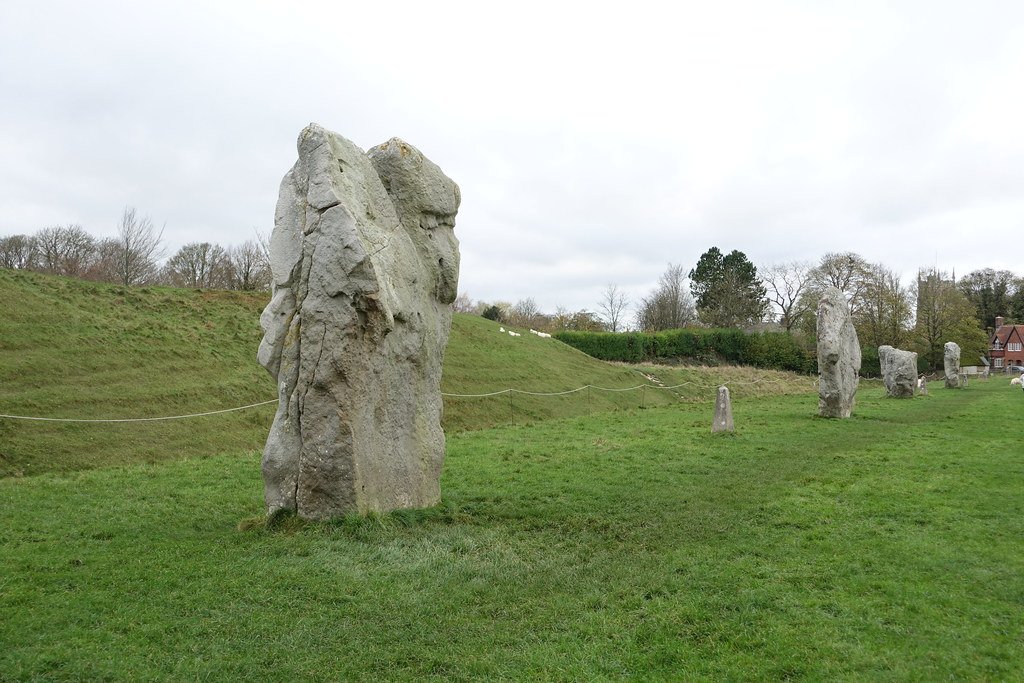
Archaeological evidence suggests that Avebury served as the focal point for seasonal gatherings that brought together communities from across prehistoric Britain in celebrations that lasted for days or even weeks. Excavations have uncovered enormous quantities of animal bones, pottery sherds, and food preparation debris that indicate feasting on a scale rarely seen in the archaeological record, with remains of cattle, pigs, sheep, and wild game suggesting elaborate communal meals. The timing of these gatherings appears to have been carefully coordinated with astronomical events, particularly the summer and winter solstices, when the monument’s alignments would have created dramatic shadow play and light effects among the stones. Analysis of pottery styles and tool types found at the site reveals that participants traveled from as far away as the Scottish Highlands and the southwest peninsula, making Avebury a kind of prehistoric pilgrimage destination that drew people from across the British Isles. These seasonal celebrations likely served multiple purposes – religious ceremonies, trade fairs, marriage arrangements, and knowledge exchange – creating a complex social institution that helped bind together the scattered communities of Neolithic Britain.
Modern Mysteries That Science Cannot Explain

Despite decades of intensive study using the most advanced archaeological techniques available, Avebury continues to generate mysteries that confound researchers and spark heated academic debates. Ground-penetrating radar surveys have detected what appear to be additional buried structures beneath the monument, including possible timber circles and stone alignments that were never excavated or have been completely lost to time. Electromagnetic surveys have revealed unexplained anomalies in the earth’s magnetic field around certain stones, leading some scientists to speculate about unknown geological processes or undiscovered underground features. Perhaps most puzzling of all, recent studies have documented subtle but measurable variations in the monument’s acoustic properties that change with seasons, weather conditions, and even time of day, suggesting that the ancient builders understood aspects of sound and resonance that remain beyond our current scientific comprehension. These ongoing mysteries ensure that Avebury remains not just a monument to the past, but an active laboratory for understanding the sophisticated knowledge possessed by our prehistoric ancestors.
The Forgotten Avenue and Lost Sacred Ways
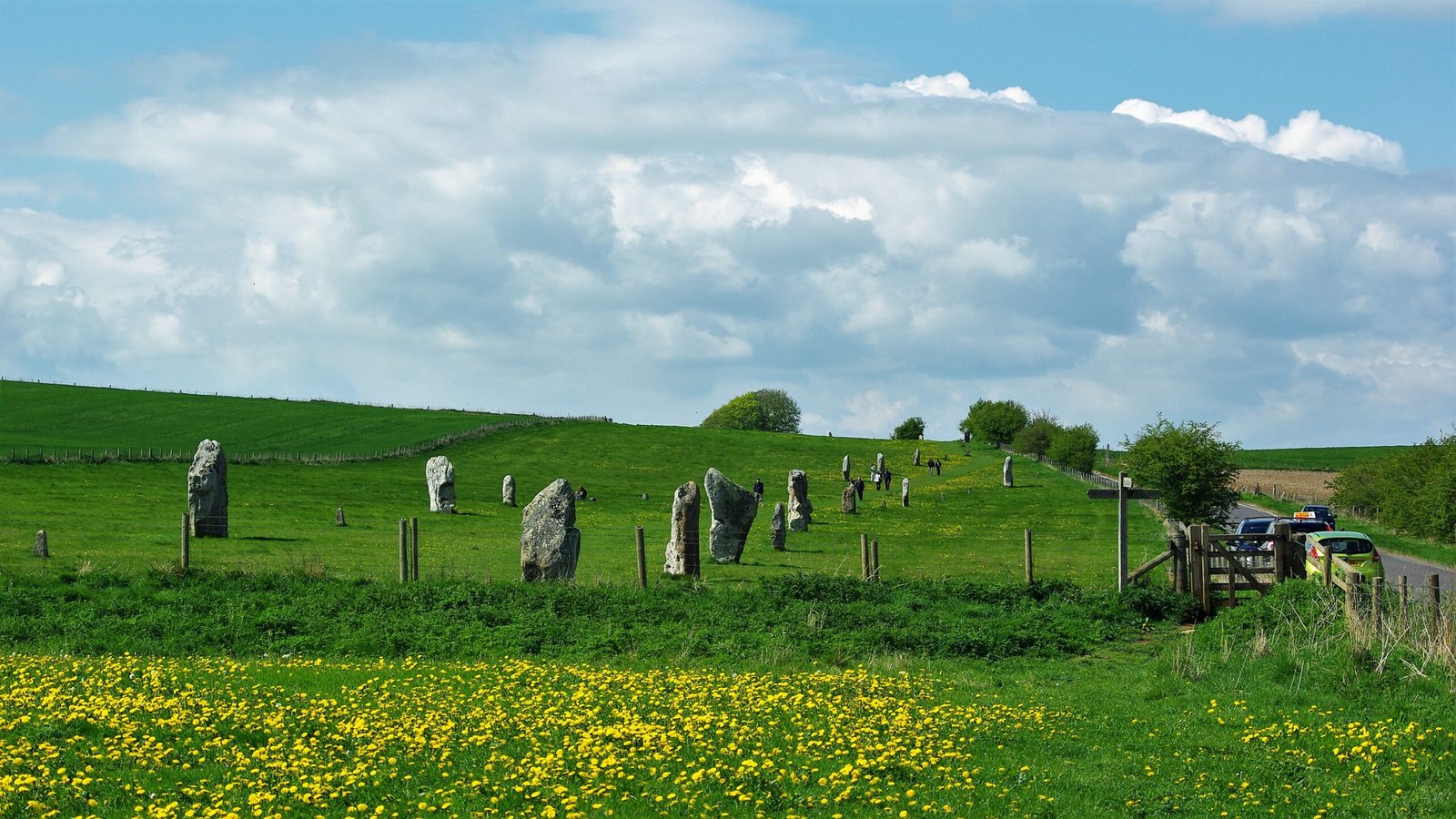
The West Kennet Avenue, a remarkable double row of paired stones that once connected Avebury to other ritual sites, represents one of prehistoric Europe’s most ambitious landscape modification projects, though much of it has been lost to agricultural development and stone robbing over the centuries. Archaeological investigation has revealed that this stone-lined processional way originally extended for nearly two miles, containing over 200 carefully selected and positioned sarsen stones arranged in alternating patterns that may have represented male and female principles. The avenue’s route was carefully planned to incorporate natural landscape features, following ridge lines and valleys in ways that created dramatic views and theatrical approaches to the main monument. Recent discoveries using aerial photography and geophysical surveys have identified traces of additional avenues and stone rows radiating out from Avebury in different directions, suggesting a complex network of sacred pathways that connected multiple ritual sites across the Wiltshire landscape. The sophistication of this landscape architecture rivals any medieval cathedral complex and demonstrates that Neolithic communities possessed advanced planning capabilities and shared symbolic systems that allowed them to coordinate massive construction projects across multiple generations.
Sacred Symbolism Carved in Stone
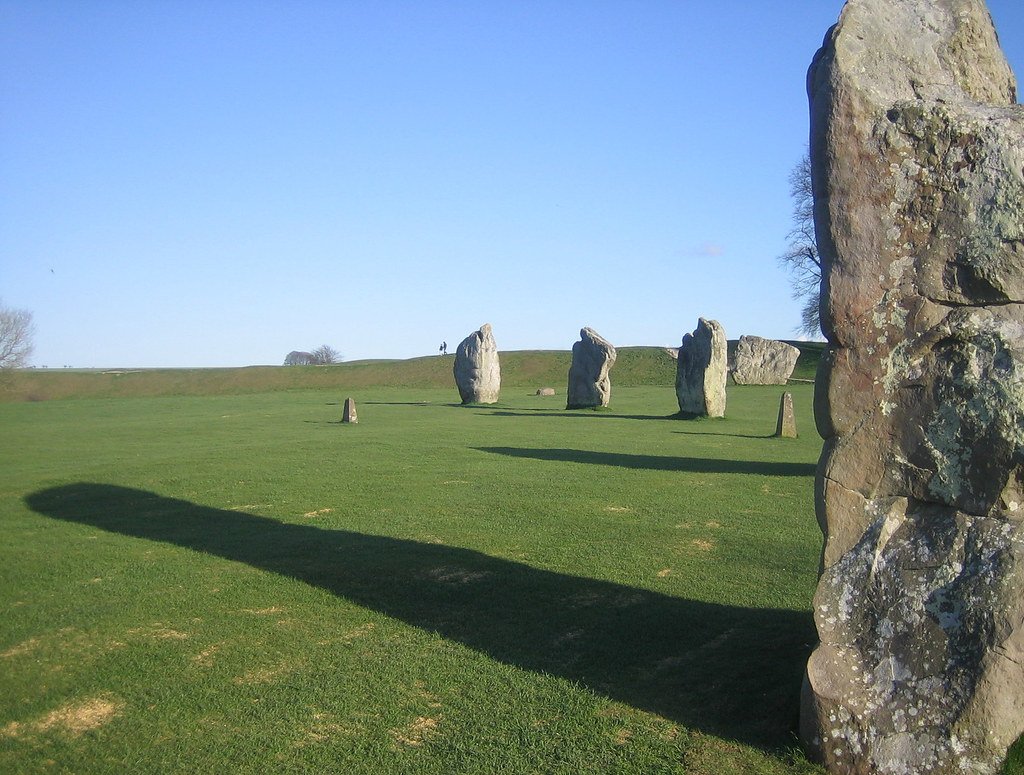
While Avebury’s stones may appear to be simple monoliths to the casual observer, careful examination has revealed subtle but significant evidence of symbolic carving and deliberate shaping that provides clues about their ritual significance. Some stones display what archaeologists call “cup marks” – small circular depressions that were deliberately pecked into the rock surface, possibly representing celestial bodies, ancestral spirits, or ritual offering points. The selection and positioning of individual stones appears to have followed symbolic principles, with tall, narrow stones alternating with broader, more rounded ones in patterns that some researchers interpret as representing male and female principles or earth and sky symbolism. Natural features in the stones – cracks, protrusions, and weathering patterns – seem to have been incorporated into their symbolic meaning, with certain stones positioned to emphasize particular shapes or shadows cast at specific times of day or year. This attention to symbolic detail suggests that Avebury’s builders were not just engineers and astronomers, but also sophisticated artists and storytellers who embedded complex mythological narratives into the very fabric of their monument.
The Druids Who Never Built Avebury

One of the most persistent myths about Avebury involves its supposed connection to the Druids, the Celtic priests described by Roman writers, but archaeological evidence definitively proves that this ancient monument predates Druidic culture by more than 2,000 years. This misconception arose during the 18th and 19th centuries when antiquarians like William Stukeley, lacking modern dating techniques, attributed all prehistoric monuments to the Druids as the most sophisticated ancient culture they knew of in Britain. The romantic appeal of Druidic connections has proved remarkably persistent, fueled by Victorian-era Celtic revival movements and modern pagan practices that have adopted Avebury as a sacred site. While modern Druids and other spiritual groups do hold ceremonies at Avebury, they are continuing a tradition of reverence rather than maintaining an ancient practice, as the monument’s original builders and their cultural traditions had vanished from Britain long before the first Celts arrived. This chronological confusion highlights how difficult it can be to separate fact from fiction when dealing with prehistoric monuments, and how modern spiritual needs can reshape our understanding of ancient sites.
Conservation Challenges in the Modern World
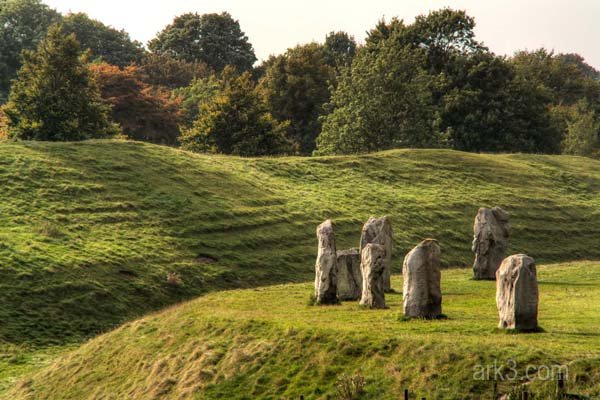
Protecting Avebury for future generations presents unique challenges that stem from its dual nature as both an active village and a World Heritage Site, creating conflicts between preservation needs and modern living that require constant balancing. The monument faces ongoing threats from visitor erosion, with hundreds of thousands of people walking among the stones each year, gradually wearing away the ground surfaces and potentially damaging the archaeological record buried beneath their feet. Climate change poses new risks as extreme weather events become more frequent – severe storms can topple ancient stones, while alternating freeze-thaw cycles cause expansion and contraction that can crack even the hardest sarsen. Development pressure from housing needs and modern infrastructure requirements creates constant tension between villagers’ rights to improve their properties and archaeologists’ need to preserve the historic landscape. Perhaps most challenging of all, the sheer popularity of the site as a tourist destination and spiritual pilgrimage point means that conservation efforts must balance public access with protection, ensuring that people can continue to experience Avebury’s magic without loving it to death.
Cutting-Edge Technology Reveals Ancient Secrets

Revolutionary advances in archaeological technology are revealing aspects of Avebury that remained invisible for centuries, transforming our understanding of this ancient monument through techniques that would seem like magic to its original builders. LiDAR (Light Detection and Ranging) surveys using aircraft-mounted laser scanners have penetrated vegetation cover to reveal previously unknown earthworks, stone alignments, and landscape modifications across the entire Avebury area. Ground-penetrating radar and resistivity surveys are mapping buried features without disturbing the soil, revealing the locations of destroyed stones, ancient post holes, and mysterious underground structures that may have been integral to the monument’s original design. Advanced computer modeling allows researchers to reconstruct the monument’s original appearance, test theories about its construction methods, and even simulate the acoustic and visual effects that ancient ceremonies might have created. DNA analysis of organic materials found in excavations is providing insights into the plants and animals that were important to Avebury’s builders, while isotope analysis of human remains is revealing the geographic origins of people who traveled to participate in ceremonies, painting a picture of Neolithic Britain as far more connected and cosmopolitan than previously imagined.
Why Avebury Deserves to Overshadow Stonehenge

The time has come to recognize Avebury as Britain’s greatest prehistoric achievement, a monument that surpasses Stonehenge in every meaningful measure yet remains criminally underappreciated by the general public. While Stonehenge offers visitors a carefully managed experience from behind protective barriers, Avebury allows you to walk freely among stones that dwarf their more famous cousins, touching monuments that have stood since before the pyramids were built. The complexity and scale of Avebury’s ritual landscape – incorporating multiple stone circles, ceremonial avenues, burial mounds, and artificial hills – represents a level of prehistoric planning and construction that makes Stonehenge look like a practice run. Most importantly, Avebury remains accessible to all, free from the commercial constraints and overcrowding that have turned Stonehenge into a heritage industry rather than a place of wonder and contemplation. The very fact that people live and work within Avebury’s ancient boundaries creates a unique atmosphere where past and present coexist, reminding us that these monuments were built by real people for real communities, not as mysterious temples for alien visitors or lost civilizations.
Standing among Avebury’s ancient stones as the sun sets behind the Wiltshire hills, you can almost hear the echoes of ceremonies that once brought together communities from across Neolithic Britain in celebrations that defined their world. This magnificent monument represents humanity at its most ambitious and visionary, a testament to what can be achieved when communities unite around a shared purpose that transcends individual lifetimes. The fact that we still don’t fully understand Avebury’s original purpose or the techniques used to build it only adds to its mystique, reminding us that our ancestors possessed knowledge and capabilities that we’re only beginning to appreciate. In an age of rapid technological change and global connectivity, Avebury stands as a reminder that some of humanity’s greatest achievements were built not with machines or computers, but with human hands, minds, and spirits working in perfect harmony. What other secrets do you think these ancient stones are still waiting to reveal?




